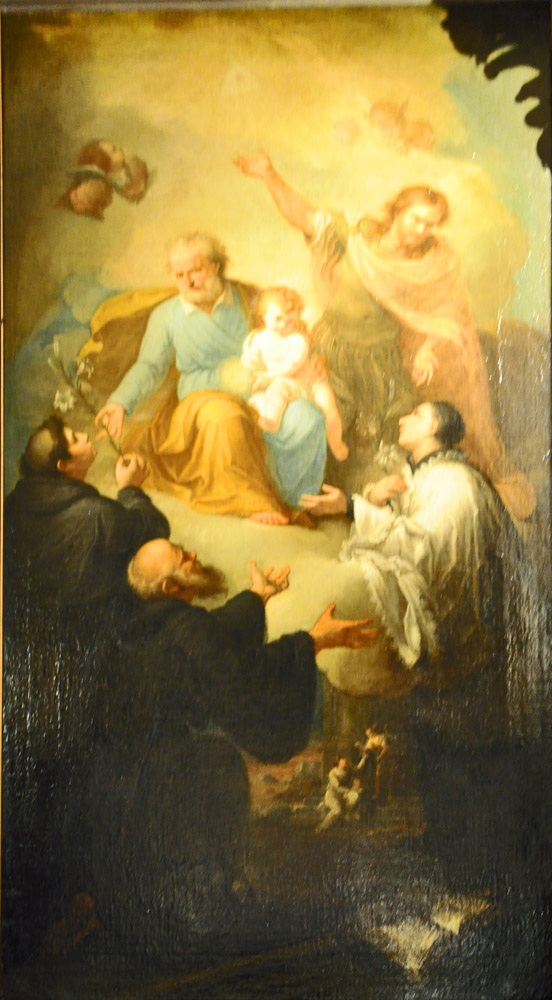
St. Joseph Gives the Lily Stalk to St. Anthony of Padua
Baroque period?
Oil on canvas
Church of San Maurizio, Venice
St. Anthony is identified by his brown Franciscan habit, his wide tonsure, and the beardless visage. By the time of this painting the lily stalk had become a common attribute of this saint. A stalk of flowers has been associated with St. Joseph since at least the Golden Legend, and the stalk itself developed from a "rod" involved in the story of Joseph's selection as Mary's spouse in the 2nd-century Protevangelium of James.
The saint on Anthony's right, also in Franciscan garb, is unidentified. The saint in military garb behind Joseph would be St. Maurice, the patron of the church. The beardless saint on the right in the white cassock is presumably St. Louis Bertrand, who is similarly garbed and paired with St. Anthony of Padua in an 18th century painting by Piazzetta, also in Venice. He appears to have already received his lily from Joseph.
View a detail of the little scene to the right of the unidentified Franciscan.
View this image in full resolution.
Read more about images of St. Anthony of Padua, St. Louis Bertrand, St. Maurice, and St. Joseph.
Photographed at the church by Richard Stracke, shared under Attribution-NonCommercial-ShareAlike license.